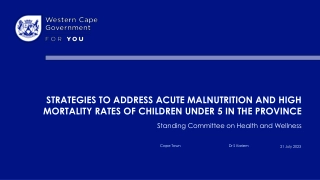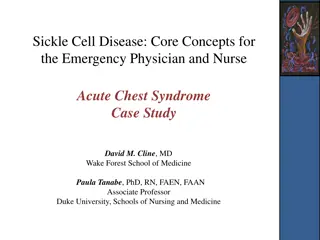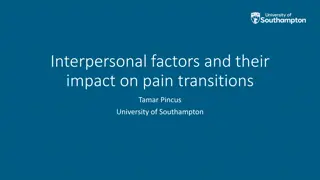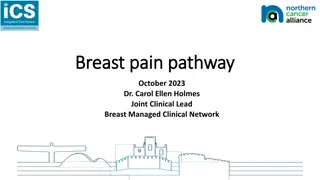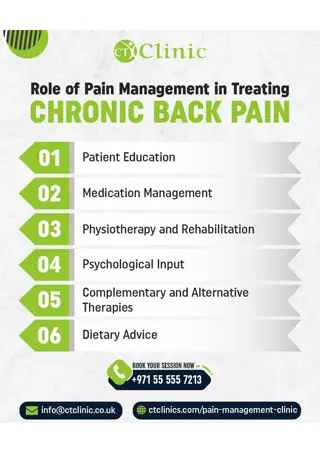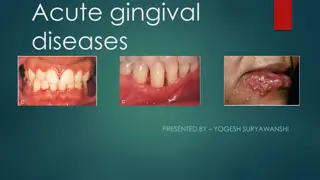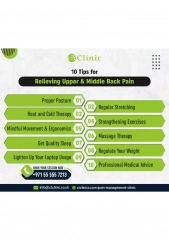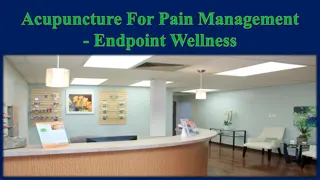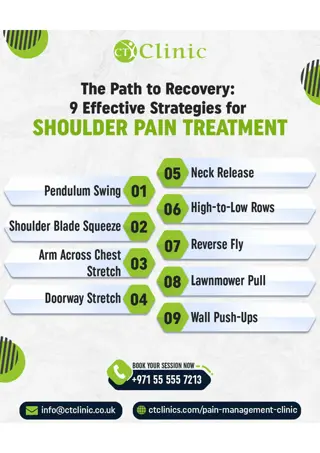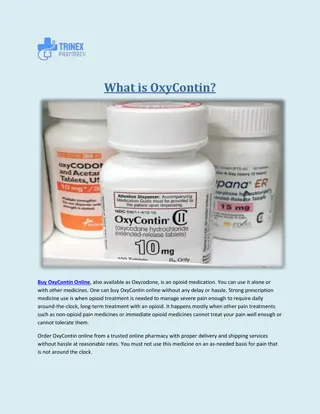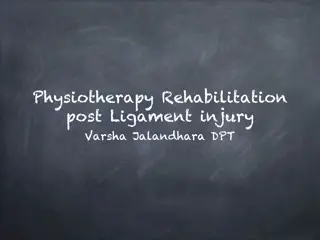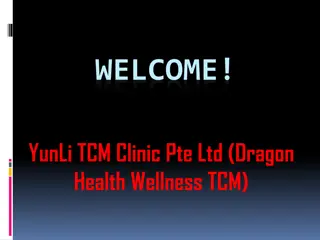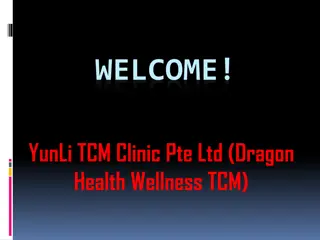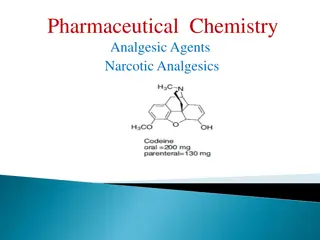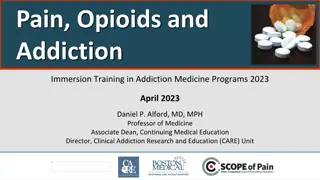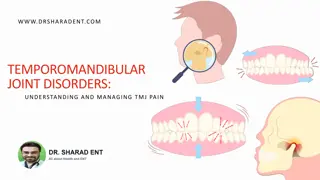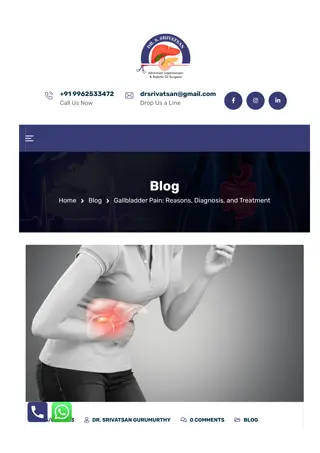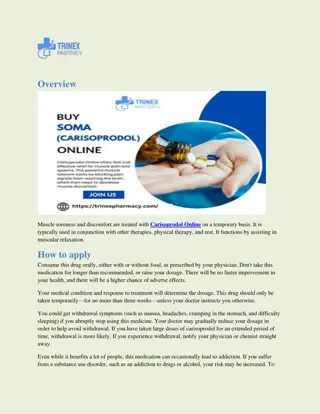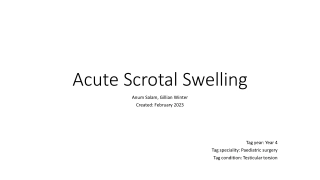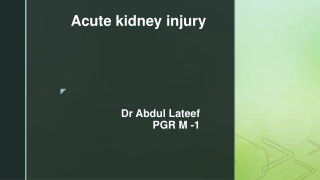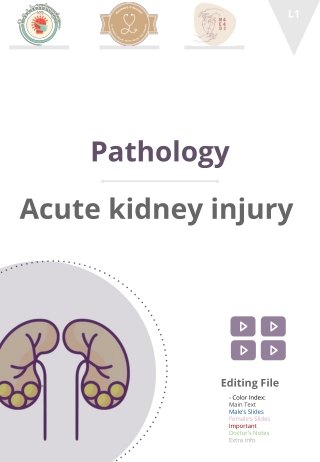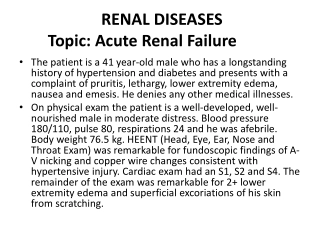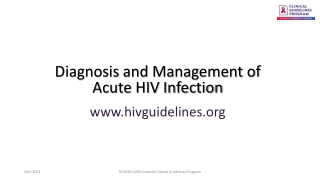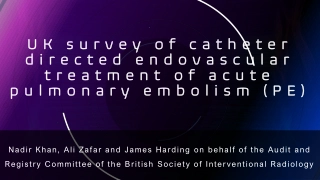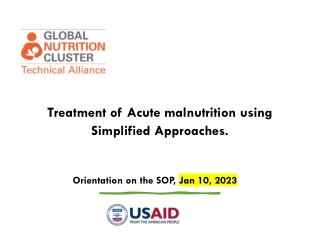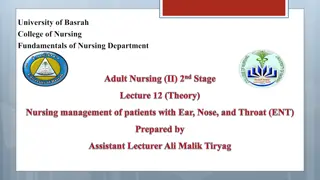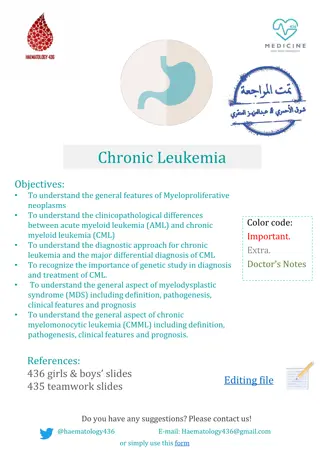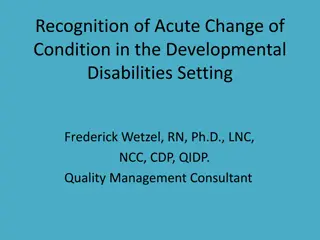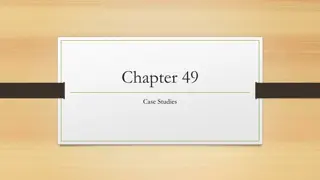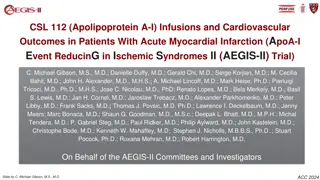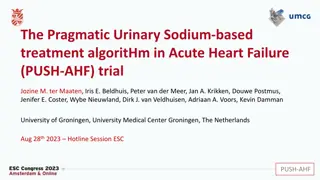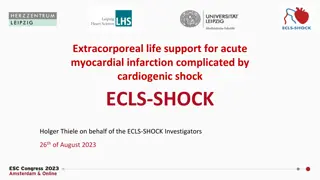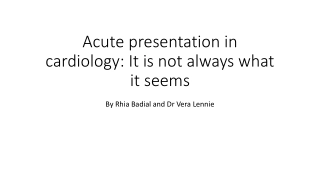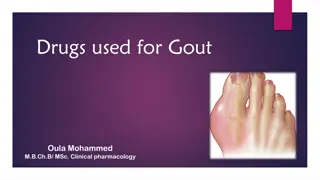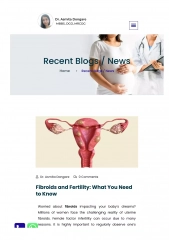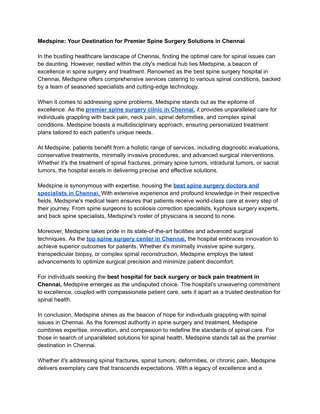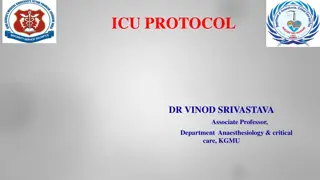Acute orofacial pain
Acute orofacial pain is often associated with dental issues, ranging from dentinal pain to periodontal pain. The pain can be moderate to severe, with various triggers such as mechanical stimulation and changes in osmotic pressure. This pain is prevalent in adults and can spread to different areas of the head and face. Understanding the mechanisms behind dental pain, including the hydrodynamic mechanism, can help in better management and treatment of acute orofacial pain.
Acute orofacial pain
PowerPoint presentation about 'Acute orofacial pain'. This presentation describes the topic on Acute orofacial pain is often associated with dental issues, ranging from dentinal pain to periodontal pain. The pain can be moderate to severe, with various triggers such as mechanical stimulation and changes in osmotic pressure. This pain is prevalent in adults and can spread to different areas of the head and face. Understanding the mechanisms behind dental pain, including the hydrodynamic mechanism, can help in better management and treatment of acute orofacial pain.. Download this presentation absolutely free.
Presentation Transcript
Acute orofacial pain Mohammad Shooriabi. Assistant Professor, Department of Oral Medicine, Faculty of Dentistry, Ahvaz Jundishapur University of Medical Sciences, Ahvaz, Iran
Introduction Acute orofacial pain is primarily associated with the teeth and their supporting structures (the periodontium). Rated as moderate to severe in intensity Pain is conceived of as deep and unpleasant In about 60%of cases pain is not localized but spreads into remote areas of the head and face. Prevalence in community dwelling adults ranges from 12 to 40%, depending on the description of dental pain used
Mechanisms of Dental Pain Mechanisms of Dental Pain
Continue drying by application of absorbent paper or a stream of air, mechanical stimulation (e.g. cutting, scratching, probing) and changes in osmotic pressure, pH or temperature.
Continue Well established algesic substances, such as potassium chloride, acetylcholine, 5-hydroxytryptamine (5-HT), bradykinin and histamine, to exposed dentine does not evoke pain
Hydrodynamic Mechanism Hydrodynamic Mechanism Brannstrom s The pressure-sensitive neurons are A fibres and are much more sensitive to outward than inward flow through the dentinal tubules
Type Of Acute Orofacial Pain Dental Pain Dentinal Pain Cracked Tooth Syndrome Pulpal Pain Periodontal Pain Acute Periapical Periodontitis Lateral Periodontal Abscess Gingival Pain Food impaction Pericoronitis Acute Necrotizing Ulcerative Gingivitis Mucosal Pain Pain from Salivary Glands
Dentinal Pain A sharp, deep sensation usually evoked by an external stimulus and subsides within a few seconds. Pain is poorly localized, often only to an approximate area within two or three teeth adjacent to the affected tooth Patient is unable to distinguish whether the pain originates from the lower or the upper jaw
Continue The most common processes associated with dentine pain are early dental caries, defective restorations and areas of exposed dentine, e.g. abrasion or erosion of the enamel, and exposed roots due to gingival recession or periodontal therapy dental probe cold or hot stimuli bite-wing dental radiograph
Cracked Tooth Syndrome Symptoms typical for dentinal pain Complain of a sharp pain, elicited by biting, that resolves immediately after pressure on the teeth ceases
Continue Possible additional diagnoses, with signs and symptoms resembling the cracked tooth syndrome, occlusal abrasion a cracked filling vertical root fracture
Treatment of Dentinal Pain Dentinal pain due to caries is best treated by removal of the carious lesion and restoring the tooth. Treatment of the cracked tooth depends on the state of the tooth Tubule-blocking agents include resins, glass ionomer cements and bonding agents Good oral hygiene is essential
Pulpal Pain Spontaneous , strong, often throbbing and exacerbated by changes in temperature, sweet foods and pressure on the carious lesion. Pain is evoked it outlasts the stimulus Localization is poor and seems to be even poorer when pain becomes more intense No definitive pain radiation patterns Does not usually cross the midline
CONTINUE Patients may describe pain in different ways and a continuous dull ache can be periodically exacerbated (by stimulation or spontaneously) for short (minutes) or long (hours) periods many instances wakes the patient from sleep Pain originating from the pulp is frequently not continuous and abates spontaneously; the precise explanation for such abatement is unclear
Continue Although pain is the most common symptom of a diseased pulp, no correlation exists between specific pain characteristics and the histopathological status of the pulp. Approximately 40% of 2202 teeth treated endodontically had no history of spontaneous pain or of prolonged pain to thermal stimulation
Continue The application of a cold stimulus is commonly used to diagnose pulpal conditions. In irreversible pulpitis application of ethyl chloride results in excruciating pain that outlasts the stimulus for well beyond 10 seconds. Percussion aids in localizing the affected tooth as about 80% of teeth with painful pulpitis are tender to percussion. Electrical pulp testers
Continue The state of the pulp cannot be judged from one single symptom and should be based on the combination of several signs and symptoms
Periodontal Pain The periodontal tissues include the alveolar bone, the periodontal ligament and the gingivae A major feature of periodontal disease is that it is usually painless. This is due to the fact that periodontal inflammation is chronic in nature, a fact also true for asymptomatic periapical rarifying osteitis lesions often detected on routine dental radiographs.
Continue periodontal pain is usually experienced in response to localized acute inflammation gingivae, the periodontal ligament and alveolar bone due to bacterial or viral infection Pain originating in the structures surrounding the teeth is easily localized; the affected teeth are very tender on chewing and are readily localized by percussion.
Acute Periapical Periodontitis Moderate to severe in intensity and long-lasting (hours). Pain is exacerbated by biting on the affected tooth Patient reports symptoms of pulpal pain that preceded pain from the periapical area Is usually better tolerated Localization of pain originating from the periapical area is usually precise Approximately half the cases the pain is diffuse
Continue Physical and radiographic signs gentle tooth percussion and the periapical vestibular area may be tender to palpation. The pulp of the affected tooth is non-vital In more severe, purulent cases, swelling of the face associated with cellulitis is sometimes present and can be associated with fever and malaise The affected tooth may be extruded and mobile, both vertically and horizontally When facial swelling appears, pain diminishes in intensity(dentoalveolar abscess.)
Continue No periapical radiographic changes are detected in the early stages. re-acutization of chronic periapical periodontitis
Treatment While the pain originates from the periodontal periapical tissues, the source of insult and infection usually lies within the pulp chamber and the root canal. No demonstrable benefit from penicillin supplementation if cellulitis, fever and malaise are present, systemic administration of antibiotics is recommended
Continue Antibiotics should also be prescribed in addition to abscess drainage and tooth debridement in immunocompromised patients 2 3 days of antibiotics was sufficient with standard doses Grinding the tooth to prevent contact with the opposing teeth helps to relieve pain.
Lateral Periodontal Abscess Pain characteristics of a lateral periodontal abscess are very similar to those of acute periapical periodontitis The pain is continuous, moderate to severe in intensity and well localized and is exacerbated by biting on the affected tooth During examination swelling and redness of the gingiva may be noticed, usually located more coronally than in acute periapical lesions.
Continue The swelling is tender to palpation and the affected tooth is sensitive to percussion and may be mobile and slightly extruded A deep periodontal pocket is usually located around the tooth once probed, pus exudation may occur with occasional pain relief In more severe cases, cellulitis, fever and malaise may occur. The tooth pulp is usually vital; i.e. it reacts normally to temperature changes and electrical stimulation Pulp may occasionally be slightly hyperalgesic
Continue Abscess formation usually results from a blockage of drainage from a deep periodontal pocket, and is frequently associated with a deep infrabony pocket and teeth with root furcation involvement
Treatment Gentle irrigation and curettage of the pocket should be performed. A vertical incision for drainage is recommended when the abscess is fluctuant but cannot be adequately approached through the pocket. Acute lateral periodontal abscess causes rapid alveolar bone destruction hence the need for early and prompt intervention.
Vertical Root Fracture A fracture of the tooth that involves most of the root will induce pain on biting. Root fractures are more common in endodontically treated teeth that have been restored with a post and core. An isolated periodontal pocket in the area of the fracture is often found If left untreated infection and abscess formation may occur. only treatment option for vertical root fractures is extraction.
Gingival Pain Gingival pain may occur as a result of mechanical irritation such as food impaction acute inflammation associated with a partially erupted tooth (pericoronitis) an acute bacterial or viral infection
Food Impaction localized pain that develops between two teeth after meals, Feeling of pressure and discomfort that is annoying and sometimes severe Pain gradually diminishes until evoked again at the next meal, Faulty contact between two adjacent teeth is noticed so that food is usually trapped between these teeth the gingival papilla is tender to touch and bleeds easily. The two adjacent teeth are usually sensitive to percussion
Continue Food impaction should be treated promptly as it may cause cervical caries and interdental alveolar bone resorption Cause of the faulty contact between the teeth is often a carious lesion, In some cases though the contacts are tight food impaction may occur, and creating anatomical escape grooves adjacent to the marginal ridge may eliminate food impaction
Pericoronitis In teeth that are incompletely erupted and are partially covered by a flap or operculum of gingival tissue. Pain, which may be severe, is usually located at the distal end of the arch of teeth in the lower jaw. Pain is spontaneous and may be exacerbated by closing the mouth. In more severe cases, pain is aggravated by swallowing and results in limited mouth opening.
CONTINUE Upon examination, the operculum is acutely inflamed (red, oedematous) and frequently an indentation of the opposing tooth can be seen on the swollen gingival flap. Occasionally there is fever, malaise and restricted mouth opening.
Treatment Irrigation of debris between the operculum and the affected tooth with saline or antibacterial agent(e.g. chlorhexidine 0.5%) should be performed. Trauma can be eliminated by grinding or extracting the opposing tooth. Systemic antibiotic administration is recommended when Limited mouth opening occurs or the patient is febrile. first-line treatment suggested is amoxicillin with clavulanic acid
An ulcerative gingival disease characterized by pain, bleeding and papillary necrosis Pain is intensified by eating and tooth brushing; these activities are usually accompanied by gingival bleeding A metallic taste is sometimes experienced and usually there is a foetid odor from the mouth.
Continue Pain is fairly well localized to the affected areas, but in cases with widespread lesions pain is experienced throughout the mouth. Fever and malaise are sometimes present. An adherent greyish slough represents the so-called pseudo- embrane present in the acute stage It appears more frequently in undernourished children and young adults as well as in patients with immunodeficiency.
Treatment Treatment includes swabbing and gentle irrigation of the ulcerative lesions, preferably with chlorhexidine or an oxidizing agent (hydrogen peroxide), and scaling and cleaning the teeth. Systemic antibiotics are recommended especially when fever and malaise are present
Mucosal Pain Pain originating from the oral mucosa can be localized diffuse natre. Localized pain is usually associated with a detectable erosive or ulcerative lesion whilst diffuse pain may be associated with a widespread infection, a systemic disease or other unknown factor
Localized Mucosal Pain Recurrent aphthous ulcers Acute Herpetic Gingivostomatitis
Diffuse Mucosal Pain usually has a burning nature and may be accompanied by a dysgeusia, predominantly of a bitter metallic quality. Candidiasis chronic iron-deficiency anaemia,
Pain from Salivary Glands Pain from salivary glands is localized to the affected gland, and is of moderate to severe intensity. The salivary gland is swollen and very tender to palpation. Pain is intensified by increased saliva production,



